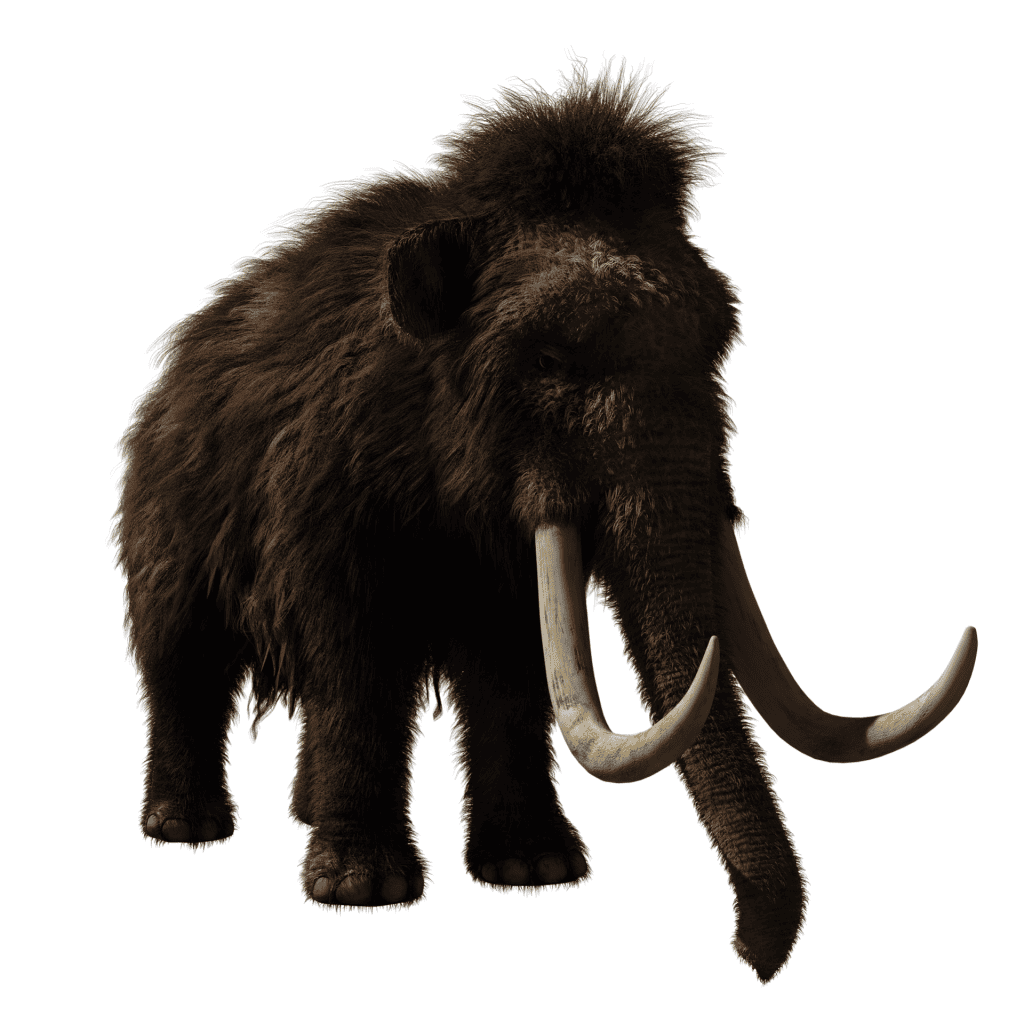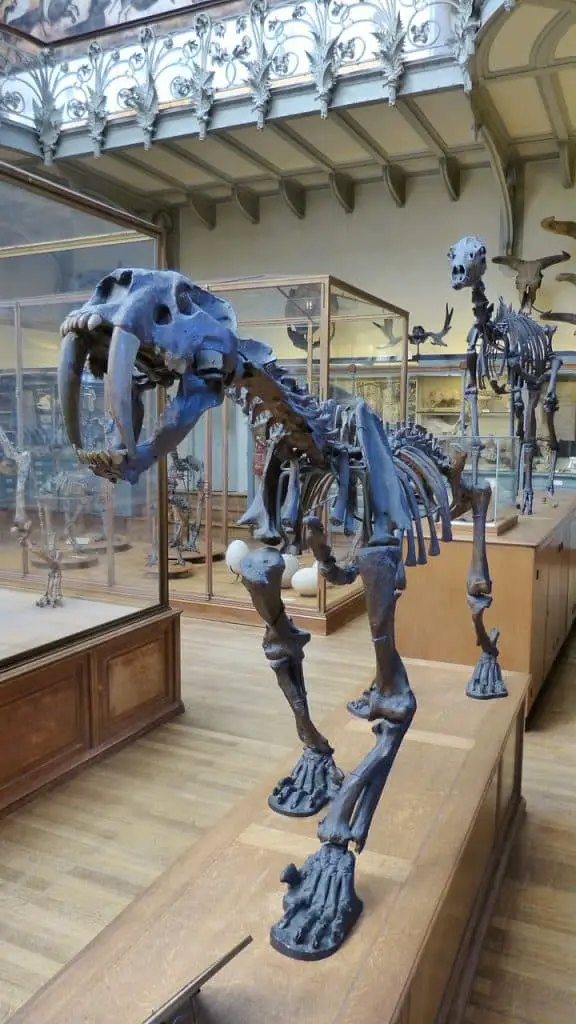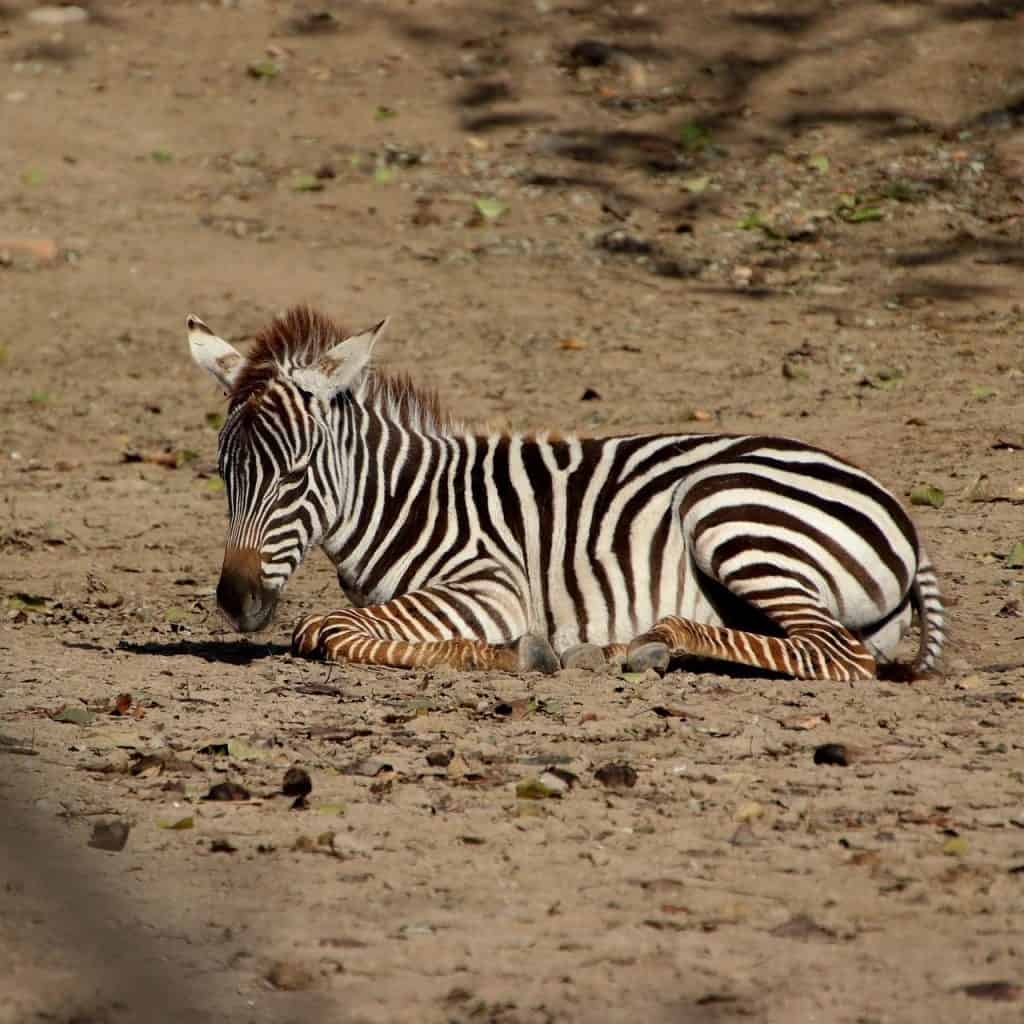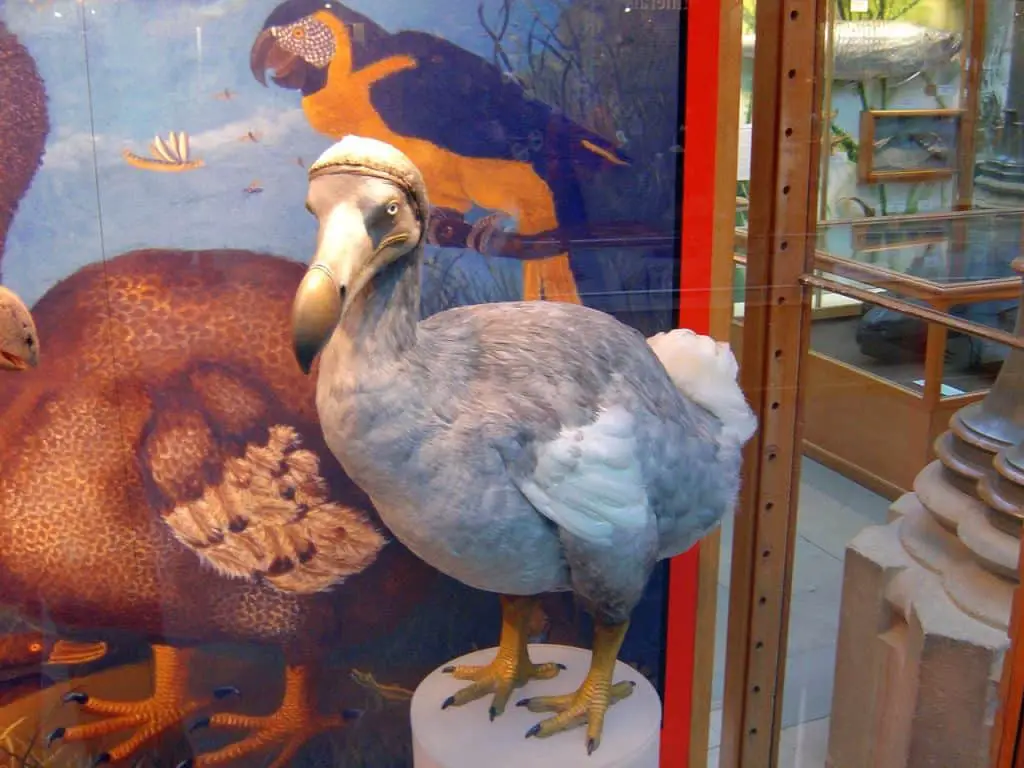If you want to learn about extinct animals, you are in the right place. We will take a look at the top 15 extinct animals.
Extinct animals
Scientists estimate that 99% of the species that have made a home on this planet at one point are now extinct. With that, it’s impossible to cover all of the extinct animals in the world. This list serves as the tip of the iceberg.
1. Woolly mammoth
Scientific name: Mammuthus primigenius

The woolly mammoth was an impressive creature that roamed the Earth during the Pleistocene epoch. This prehistoric elephant species stood around 10 to 13 feet tall at the shoulder and was covered in long, shaggy hair that helped it withstand harsh Arctic conditions. Its large, curved tusks could reach up to 16 feet in length, and it had a hump of fat on its back, which aided in energy storage.
The woolly mammoth went extinct approximately 4,000 years ago, during the Late Pleistocene. It inhabited vast regions of the northern hemisphere, including parts of Europe, Asia, and North America. These colossal herbivores thrived in a variety of habitats, from the grassy steppes to the frozen tundra.
Several factors contributed to the woolly mammoth’s extinction. Climate change played a significant role, as the Earth transitioned from the last Ice Age to a warmer period. The loss of their preferred habitat, dwindling food sources, and increased competition with humans and other predators are believed to have accelerated their demise.
2. Saber-toothed tiger
Scientific name: Smilodon

The saber-toothed tiger, scientifically known as Smilodon, was a fearsome predator that prowled the Earth during the Pleistocene epoch. This large carnivorous cat possessed distinctive elongated canine teeth that could reach up to 7 inches in length, giving it its iconic name. With a robust body and muscular limbs, the saber-toothed tiger stood about 3 to 3.5 feet tall at the shoulder and could weigh up to 600 pounds.
The saber-toothed tiger became extinct around 11,000 years ago, near the end of the Pleistocene. It primarily inhabited North and South America, with fossils found in present-day locations such as the La Brea Tar Pits in California and various sites across South America.
The exact reason behind the saber-toothed tiger’s extinction remains uncertain, but multiple factors likely contributed to their demise. Changes in climate, such as the transition from the Ice Age to a warmer period, could have impacted their habitat and food availability. Additionally, shifts in ecosystems and the disappearance of their preferred prey species may have played a role.
3. Quagga
Scientific name: Equus quagga quagga

The quagga was a unique subspecies of plains zebra that once inhabited the grassy plains of South Africa. This remarkable extinct animal had a striking appearance, with a sandy-brown body, white belly, and distinctively striped head and neck. Unlike other zebras, the quagga’s stripes gradually faded towards its hindquarters, giving it a partially striped appearance.
Tragically, the quagga became extinct in the late 19th century. Its last known wild individual perished in 1878, and the last captive quagga died in an Amsterdam zoo in 1883. Humans played a major role in the quagga’s extinction. They were extensively hunted for their meat and hides, as well as to protect grazing lands for domestic livestock.
4. Tasmania tiger
Scientific name: Thylacinus cynocephalus
The Tasmanian tiger, scientifically known as the Tasmanian wolf, was a carnivorous marsupial that once inhabited the island of Tasmania, Australia. Despite its name, the Tasmanian tiger was not actually a tiger. It had a slim, dog-like body with sandy-brown fur, distinct dark stripes across its back and tail, and a head similar to that of a wolf. Notably, the females had a pouch in which they carried their young.
The Tasmanian tiger was declared extinct in the 20th century. The exact date of extinction is debated, but the last known individual died in captivity in the Hobart Zoo on September 7, 1936. The Tasmanian tiger was primarily found in Tasmania, but historical records suggest it may have also inhabited parts of mainland Australia. The species faced a combination of factors that led to its extinction, including habitat loss, hunting by settlers who considered it a threat to livestock, and disease introduced by domestic dogs.
5. Passenger pigeon
Scientific name: Ectopistes migratorius
The passenger pigeon was a remarkable bird species that once thrived in vast numbers across North America. These extinct animals had a unique appearance, with a slate-blue body, a reddish-brown breast, and iridescent feathers on their necks. They were known for their swift flight and agility in the air.
In the early 20th century, these birds, known for their astounding numbers, succumbed to extinction. The last known individual, named Martha, died in captivity at the Cincinnati Zoo on September 1, 1914.
The main cause of the passenger pigeon’s extinction was relentless hunting and habitat destruction. The species was extensively hunted for food and commercial purposes, as well as due to misconceptions that they were agricultural pests. Combined with the loss of their forested habitats, the relentless exploitation of the passenger pigeon population led to their rapid decline and eventual extinction.
6. Dodo
Scientific name: Raphus cucullatus

The dodo, scientifically known as Raphus cucullatus, was a flightless bird that once inhabited the island of Mauritius in the Indian Ocean. The dodo had a unique and somewhat comical appearance, with a large, plump body, small wings, a stout beak, and distinctive feathers. It stood about three feet tall and had a grayish-brown plumage with a patch of curly feathers on its tail.
The dodo went extinct in the mid-17th century. The exact date of its extinction is uncertain, but it is believed to have occurred sometime between 1662 and 1681. The primary reason for the dodo’s extinction was human activity. The arrival of European sailors to Mauritius in the late 16th century brought with it introduced species, habitat destruction, and overhunting. The dodo had evolved in isolation, and its lack of fear towards humans made it an easy target for exploitation. The combination of hunting for food, the destruction of its forest habitat, and the predation of introduced species such as rats and pigs led to the rapid decline and eventual extinction of the dodo.
7. Caribbean monk seal
Scientific name: Monachus tropicalis
When you think of the Caribbean today, seals might not spring to mind. But believe it or not, a relatively large seal population once called this area home. The Caribbean monk seal was a marine mammal that once inhabited the warm waters of the Caribbean Sea and Gulf of Mexico. These extinct animals had a sleek, streamlined body covered in short, dense hair that varied in color from gray to brown. They were relatively small compared to other seal species, with males reaching lengths of up to 8 feet and weighing around 600 pounds.
The last confirmed sighting occurred in 1952, and the last unconfirmed sighting was reported in the 1970s. They were once found along the coasts and islands of the Caribbean region, including areas such as the Bahamas, Florida, and the Greater Antilles.
The primary reasons behind the Caribbean monk seal’s extinction were overhunting and habitat degradation. The seals were relentlessly hunted for their oil, skin, and meat, as well as being killed as pests by fishermen. This intense exploitation, combined with habitat loss due to coastal development, human disturbance, and changes in marine ecosystems, led to their rapid decline and eventual extinction.
8. Great auk
Scientific name: Pinguinus impennis
The great auk was a flightless seabird that once inhabited the North Atlantic Ocean. These extinct animals had a distinctive appearance, with a stocky build, black feathers on their back, and a white belly. They stood about 30 inches tall and had short wings that were adapted for swimming rather than flying.
Great auks vanished off the face of the earth in the mid-19th century. The last known pair was killed on the island of Eldey, off the coast of Iceland, in 1844. The great auk was once found in various locations across the North Atlantic, including Iceland, Greenland, Canada, and the British Isles.
The main reasons for the great auk’s extinction were overhunting and the exploitation of its eggs. These birds were highly sought after for their meat, feathers, and eggs, which were considered a delicacy. Their inability to fly made them an easy target for hunters, and the demand for their products drove their populations to decline rapidly. The combination of uncontrolled hunting, habitat destruction, and the collection of eggs led to the complete extinction of the great auk.
9. Ivory-billed woodpecker
Scientific name: Campephilus principals
It’s hotly debated whether or not the ivory-billed woodpecker is actually extinct. Of course, I hope the woodpecker is found again. But each year that passes without a sighting makes the possibility of rediscovery less likely.
The last confirmed sighting of the species occurred in 1944 in Louisiana. They were once found in extensive bottomland forests, swamps, and riverine habitats in the southeastern United States, particularly in states such as Florida, Alabama, Louisiana, and Arkansas. These woodpeckers were known for their striking appearance, with a black body, large white patches on their wings, and a distinct ivory-colored bill. They were one of the largest woodpecker species in the world, measuring around 20 inches in length.
Again, it’s debated if these birds are extinct. If you spot one of these possibly extinct animals, please let your local wildlife officials know!
10. Giant ground sloth
Scientific name: Megatherium americanum
The giant ground sloths were immense herbivorous mammals that once roamed the ancient landscapes of the Americas. These sloths were true giants, with some species reaching up to 20 feet in length and weighing several tons. They had robust bodies, long claws, and a long neck, allowing them to reach vegetation in tall trees.
The giant ground sloths became extinct around 10,000 years ago. As the climate shifted at the end of the last Ice Age, the availability of suitable vegetation for these large herbivores decreased. Less available food was one reason for its decline.
11. Golden toad
Scientific name: Incilius periglenes
The golden toad was a brightly colored amphibian that once inhabited the Monteverde Cloud Forest in Costa Rica. These toads were known for their vibrant golden-orange skin, which made them a remarkable sight. They were relatively small, with adult males measuring around 1.5 inches in length.
The golden toad became extinct in the late 1980s. The last confirmed sighting of the species occurred in 1989. The primary cause of the golden toad’s extinction is believed to be climate change. Changes in weather patterns, including prolonged droughts and alterations in precipitation, affected the delicate balance of the forest ecosystem. These climatic shifts disrupted the breeding patterns and habitat availability for the golden toads. Unfortunately, this led to their rapid decline and eventual extinction.
12. Yangtze River dolphin
Scientific name: Lipotes vexillifer
The Yangtze River dolphin was a unique cetacean species that once inhabited the Yangtze River in China. These dolphins were often referred to as baiji, meaning “white fin” in Chinese, due to their light-gray coloration. They had a long, slender body and a narrow beak.
The Yangtze River dolphin was declared functionally extinct in 2006. Despite extensive search efforts, no confirmed sightings have been reported since 2002. The primary reasons for extinction were human activities, including habitat degradation, pollution, overfishing, and dam construction. These activities drastically altered the river ecosystem, leading to a decline in the dolphin’s prey availability and causing habitat fragmentation. Additionally, collisions with boats and entanglement in fishing nets further contributed to their decline. The combined pressures from human impacts pushed the Yangtze River dolphin to the brink of extinction
13. Stellar’s sea cow
Scientific name: Hydrodamalis gigas
The stellar sea cow was a massive marine mammal that once inhabited the waters surrounding the Commander Islands in the Bering Sea. These sea cows were immense, with adult individuals measuring up to 30 feet in length and weighing several tons. They had a rounded body, paddle-like flippers, and a large tail. The species was found exclusively in the shallow coastal waters of the Commander Islands, which are part of present-day Russia.
The stellar sea cow became extinct in the 18th century. The last confirmed sighting of the species occurred in 1768. The main cause of the stellar sea cow’s extinction was overhunting. When discovered by humans, these gentle giants were hunted relentlessly for their meat, fat, and hides. Their large size and slow movements made them easy targets for hunters. Combined with the limited distribution of their habitat, this uncontrolled exploitation led to the rapid decline and eventual extinction of the species.
14. Carolina parakeet
Scientific name: Conuropsis carolinensis
The Carolina parakeet was a colorful and social bird species that once inhabited various parts of the United States, including the Southeast, Midwest, and Northeast regions. These extinct animals had a vibrant plumage, with green bodies, yellow heads, and red and orange facial feathers. They had a medium-sized body, measuring about 12 to 14 inches in length.
The last known individual, named “Incas,” died in captivity in 1918. The main reasons for the Carolina parakeet’s extinction were a combination of habitat loss, hunting, and capture for the pet trade. The widespread deforestation and agricultural expansion during the 19th century reduced the availability of suitable nesting sites and food sources for these parakeets. Additionally, they were hunted for their feathers, which were in demand for the millinery trade, and they were also captured for the pet market. The intense pressures from human activities, coupled with their limited population size and low reproductive rate, led to the rapid decline and eventual extinction of the Carolina parakeet.
15. Spix’s Macaw
Scientific name: Cyanopsitta spixii
The Spix’s macaw is a strikingly beautiful bird species that once called the arid regions of northeastern Brazil it’s home. These macaws were renowned for their vibrant blue feathers, with a bright blue head, neck, and wings contrasting against their pale blue chest and abdomen. They had a strong beak and a long, graceful tail.
The Spix’s macaw is considered extinct in the wild, with the last known individual in the wild sighted in 2000. The primary reasons for the Spix’s macaw’s extinction in the wild are habitat loss and illegal wildlife trade. The destruction of their native habitat due to agricultural expansion, logging, and infrastructure development severely reduced their available nesting and foraging sites. Additionally, the illegal capture and trade of these highly coveted birds for the pet market further decimated their populations.
But conservation efforts are focused on bringing this wild population back from the brink. Since 2020, 75+ captive-reared birds have been released back into their natural habitat. It’s possible this species will be resurrected in the wild with the help of human intervention. But it’s too early to tell how successful these efforts will be.
Common reasons species go extinct
Of course, the list above isn’t comprehensive. Unfortunately, many animals have gone extinct. Here’s a look at some of the reasons why species get pushed to the brink:
- Habitat loss and degradation: Destruction, fragmentation, and alteration of natural habitats due to human activities are major contributors to species extinction. Examples include deforestation, urbanization, and conversion of land for agriculture
- Changing climate patterns: Rapid and significant changes in climate patterns can disrupt ecosystems, alter habitats, and affect the availability of resources. All of this leads to the extinction of vulnerable species unable to adapt quickly enough.
- Overexploitation: Unsustainable hunting, fishing, and poaching for food, trade, or sport can drive species to extinction. This includes illegal wildlife trade, where demand for animal parts and products threatens many species.
- Pollution: The release of harmful pollutants into the environment, such as chemicals, toxins, and waste, can contaminate ecosystems and have detrimental effects on species.
- Invasive species: Introduction of non-native species to new habitats can have devastating impacts on native species, outcompeting them for resources, preying upon them, or disrupting their ecological relationships.
- Disease and pathogens: Outbreaks of diseases and the spread of pathogens can decimate populations, particularly when species have no natural resistance or are already facing other stressors.
- Genetic factors: Inbreeding, genetic bottlenecks, and reduced genetic diversity can make populations more vulnerable to diseases, environmental changes, and other threats, increasing their risk of extinction.
- Fragmentation and isolation: Fragmentation of habitats and the subsequent isolation of populations can reduce gene flow and limit access to resources, making species more vulnerable to extinction.
- Lack of conservation measures: Insufficient protection, conservation efforts, and legal frameworks can leave species vulnerable to human activities and increase the likelihood of their extinction.
Resources about extinct animals
If you are interested in learning more about extinct animals, here are some resources I recommend:
- Sea of Slaughter by Farley Mowat
- The Sixth Extinction by Elizabeth Kolbert
Final take on extinct animals
It can be sad to look at a list of extinct animals. But learning about these animals honors them.
Hopefully, this list of beautiful and extinct animals will inspire you to take action to protect animals teetering on the edge of extinction today.
